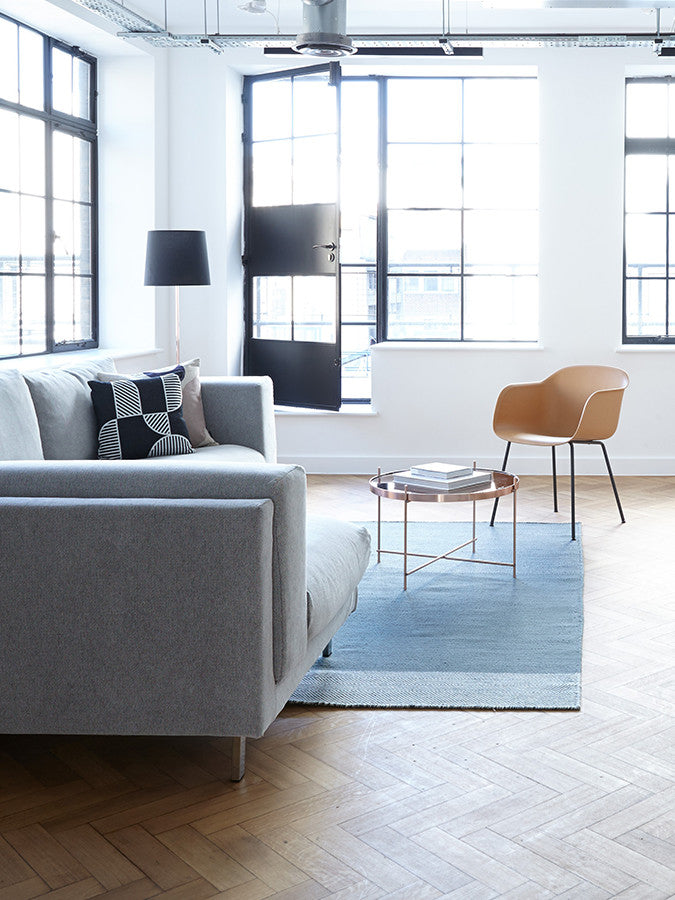
Purchasing something as big and expensive as a sofa can be a daunting task that one really doesn't want to mess up. Will it fit? Will this fabric last? Is it comfortable? There are a variety of things to think about when purchasing a new piece of furniture, but especially one that is most likely going to be sat on every single day of its life. So, I've come up with a guide to help you choose the absolute best sofa for you and your space, along with a handy checklist to take along with you when sofa shopping.
Budget
This is a major factor in the sofa buying process, so I would start with setting a budget. Keep in mind that a cheaper sofa may be less expensive upfront, but it will probably need to be replaced sooner than it's higher quality counterpart, possibly costing you more in the long run. Although, with good care I've had several inexpensive pieces last me for many years. Here are a few sources for various price points.
$1,000 and under: Ikea, Scandinavian Designs.
$1,500-$2,000: Crate and Barrel, Room and Board, Restoration Hardware, Thrive
$2,000 and up: Design Within Reach, Blu Dot
Function
+ How
The first thing to think about is how this new sofa needs to serve you. Will you be lounging on it in front of the TV for movie nights, or having intimate conversations over coffee?
+ Who
Next, who will be using this sofa? Is it just you? Do you have kids, pets, a spouse? Does the sofa need to be able to seat five people when you entertain?
+ Size
The size of the sofa will depend on the last two questions, as well as the available space you have. One tip for determining if a sofa will fit is to layout the footprint with masking tape on the floor to get an idea of the spacing. Also, you will want to be sure that the sofa you choose will be able to fit through any narrow hallways or doors in your home. Take a look at my furniture layout guide for dimensions you should remember when planning your layout.
Once you are clear on how you need this sofa to function you will have a better idea on what materials and style will work best for you.
Structure & Materials
The level of use that this sofa is going to get will help you decide how durable it needs to be. There are four components of the structure and materials that will determine the quality, strength, and durability of the sofa. You will want to test out your sofa in the store before you buy it to make sure it is comfortable has a solid structure.
+ Frame
A high quality sofa will start with a frame made of kiln dried hard wood. The kiln drying process removes all of the moisture resulting in a strong frame that won't warp or crack. Some examples of hardwoods are Birch, Cherry, Maple, Mahogany, Oak, and Teak. Another thing to look out for are strong joints that are glued, doweled, and screwed, a less expensive sofa may be stapled instead which isn't as durable.
+ Support
There are three types of seating supports used in sofas. Hand tied springs are springs connected with twine. Sinuous springs are an S shape and run from front to back, they also take up less space than hand tied springs. The third support, usually found in less expensive sofas, is web suspension, where webbing is crossed and attached to the seat and back to create a platform. The first two spring types will give you the most support.
+ Cushion Filling
The cushions on your sofa should start with a high density foam core that is wrapped in either polyfil, down, or down blend. This will create a strong yet, soft cushion that won't lose its shape easily.
+ Fabric
The fabric you choose for your sofa will depend on how it will be used, and who will be using it.
-
Leather is your most expensive option, it wears well and it is easy to clean.
-
100% Natural fibers such as linen and cotton are going to be pricer, they have great texture and resist fading well, but are not easy to clean. Fine for light wear.
-
A natural and synthetic fiber blend, such as cotton/polyester, will retain the great texture of natural fibers while adding the desired durability of synthetic.
-
100% Synthetic fibers will be the easiest to clean, and probably the best option if you have kids and are worried about spills. Great for heavy, everyday use.
Most stores will provide you with swatches of their fabric options. I highly recommend you take swatches home and see how they look with your existing color palette and lighting. The fluorescent lights used in retail give off a blue tint that doesn't represent the way the fabrics will actually look in your home.
Style
The style of your sofa is totally up to your aesthetic, but try to choose a style that is cohesive with the rest of your furniture and decor, and go with your gut, it's usually right. Also keep in mind how the details will effect your space. Sofas with exposed legs and lower arms, such as Mid Century Modern styles, will have an airer feel which is great for a smaller space. Sofas with high backs and arms, and shorter, or skirted legs will feel heavier.
Related Post: How To Style A Sofa
Sofa Buying Checklist
To help you out when sofa shopping I created a handy checklist to keep you organized and make the decision making a little easier. Subscribe to my newsletter to access the checklist, then print it out and bring it along to keep track of your top three sofa contenders!
Click here to download checklist
© 2016 Jaymee Srp. For personal use only.

